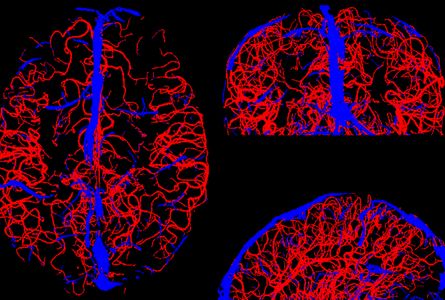Welcome to USArhythms (Ultra Slow Arterial rhythms)!
The vasculature of the cerebral cortex orchestrates the allocation of energy resources, oxygen and glucose, throughout cortical areas with different levels of activity and computational complexity. Furthermore, active neurons affect vasodynamics through the process of neurovascular coupling. This allows functional magnetic resonance imaging (fMRI) to infer neuronal processing in humans from changes in blood flow and oxygenation.
We seek to understand how brain-wide neuromodulatory (cholinergic, dopaminergic, etc.) neuronal circuits participate in control of large-scale vasodynamics patterns observed in fMRI experiments in order to infer features of the underlying brain state dynamics from fMRI data.
Fundamental dynamics of vasomotion
|
The role of neuromodulation and brain state
|
Scaling up from mouse to human
|
Theory and network modeling
|
Latest Stories
-

Long-wavelength traveling waves of vasomotion modulate the perfusion of cortex
Using direct optical imaging, David Kleinfeld and his team assessed the spatiotemporal dynamics of ~0.1 Hz arteriole diameter oscillations in Read more
-

Ultra-high-resolution in vivo imaging of cerebral vasculature in humans
Jon Polimeni and his team have obtained unprecedented images of the pial arterial vasculature of the human brain in vivo Read more
-

Natalie Fomin-Thunemann receives a Trainee Highlight Award at BRAIN
Congratulations to Natalie who has been recognized at the 8th Annual BRAIN Initiative Meeting for her work on O2 imaging! Read more
